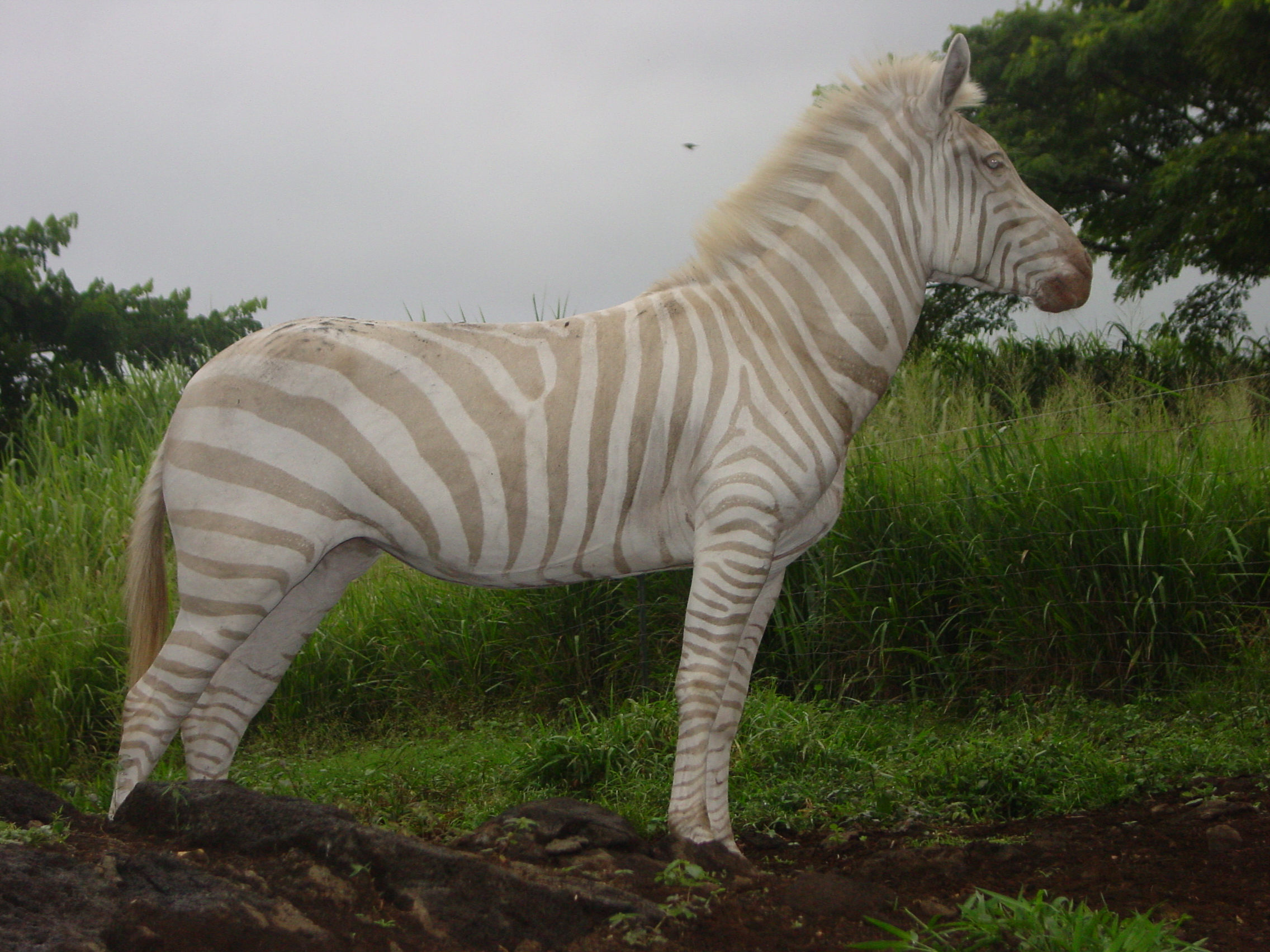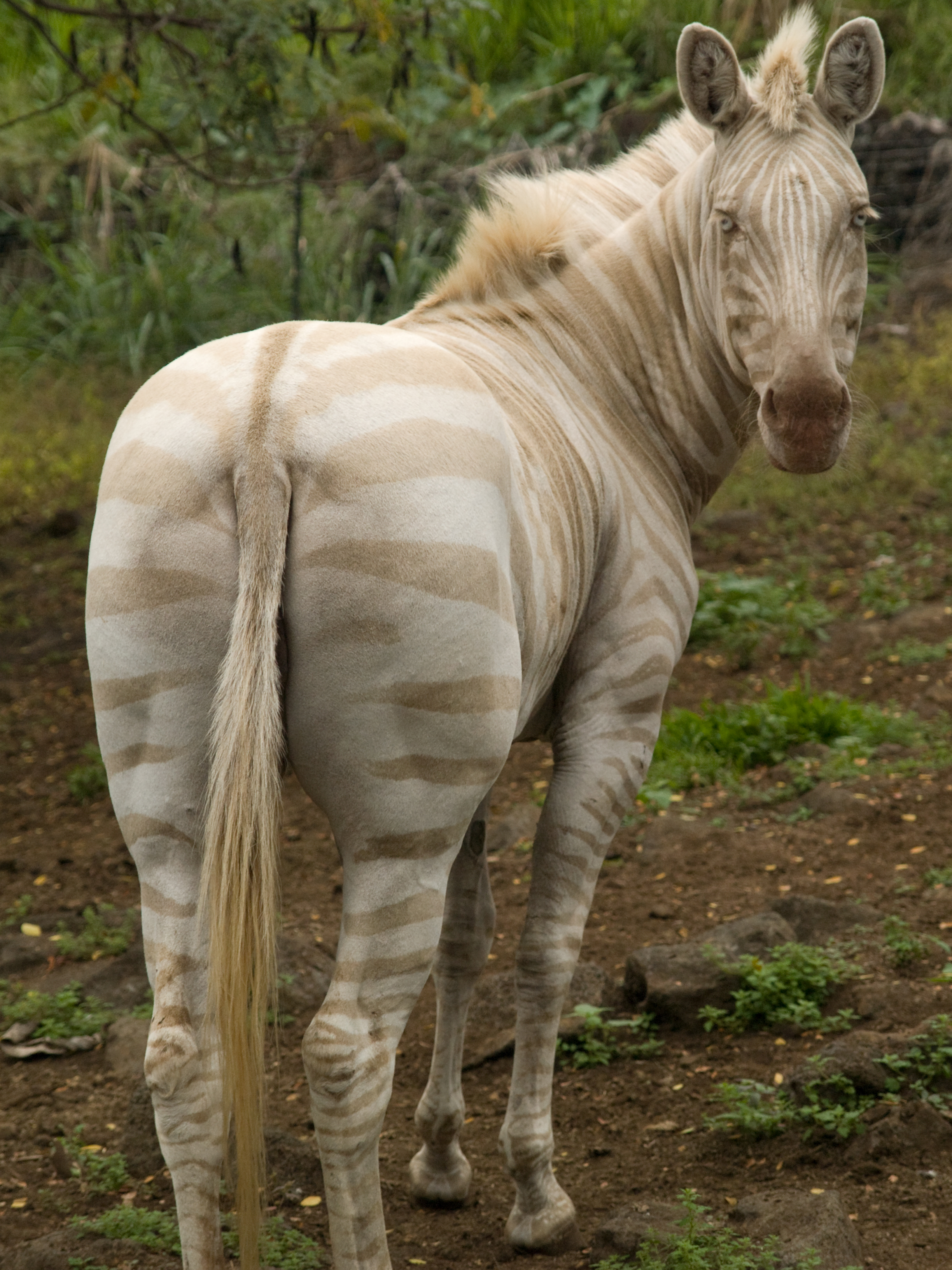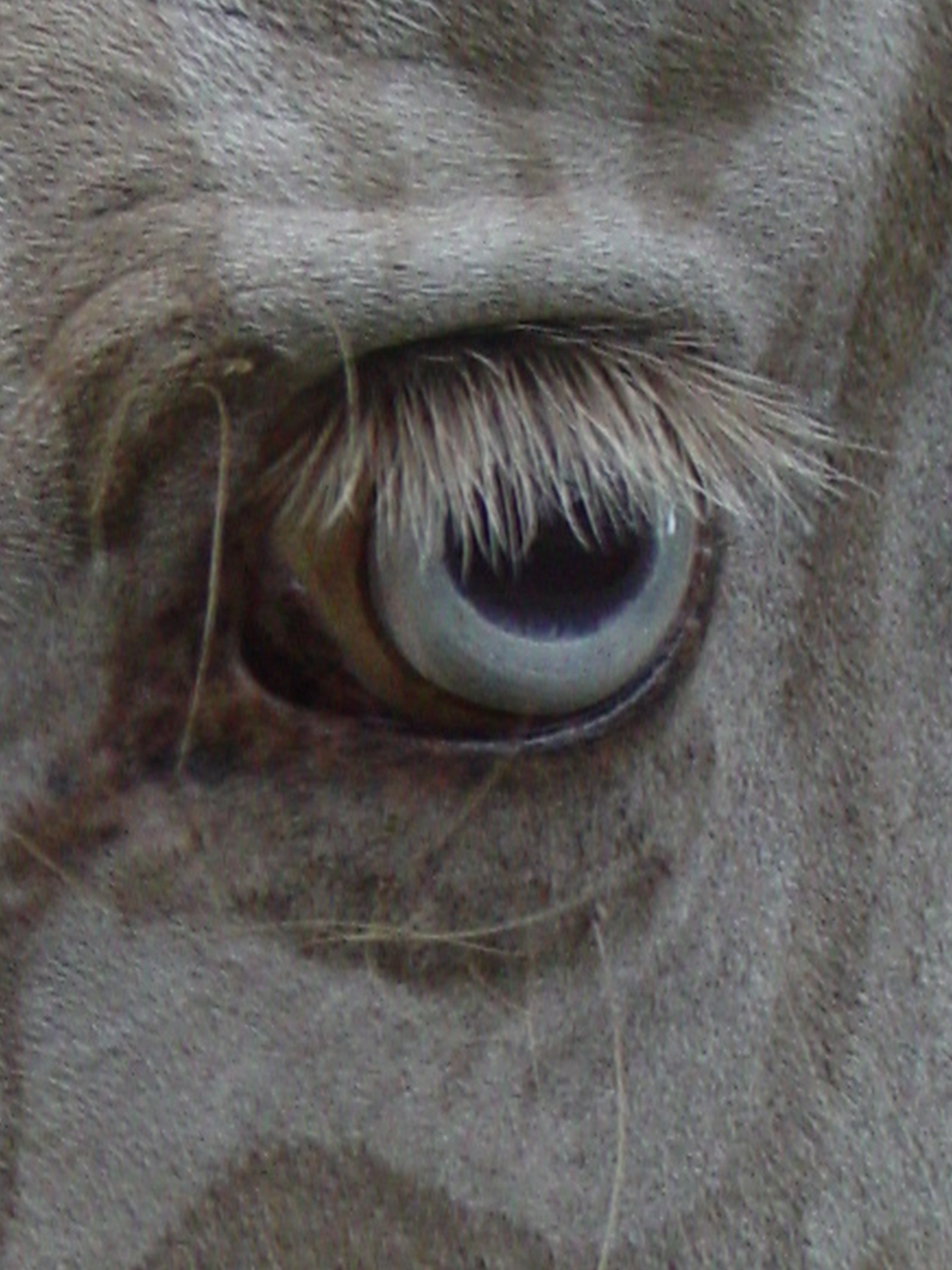Rare Tan-and-White Striped Zebra Dies at Hawaiian Ranch

A rare zebra with tan stripes died Sunday (Aug. 6) at a private sanctuary for exotic animals in Kona, Hawaii.
Ann Goody, executive director and curator of the Three Ring Ranch in Hawaii, discovered Zoe's body Sunday morning.
"I looked out at 6 a.m., and I thought, 'Oops, she's laying out in the sun,' and whistled —and there was no ear movement," Goody told Live Science. [The Pink and White Album: Amazing Albino Animals]
Zoe, a Burchell's zebra — the most common type of zebra— was 19. In the wild, zebras can live an average of 20 to 30 years, while in zoos, they can survive up to 40 years, according to the Woodland Park Zoo.

But Zoe was no ordinary zebra. With pale brown stripes and blue eyes, Zoe had a pigmentation disorder, although the researchers Live Science spoke with disagreed on what to call her condition.
The lack of consensus arises from uncertainty on how to define the term albinism, a mutation in the TYR gene that results in a change in the pigmentation of skin, eyes, hair, fur or scales.
To those who consider albinism to be only a complete lack of pigment, Zoe doesn't qualify. In this case, her condition might better be categorized as hypopigmentation, which refers to a reduction in the pigment melanin, Rebecca Bellone, an associate adjunct professor of veterinary genetics at the University of California, Davis, told Live Science.
Sign up for the Live Science daily newsletter now
Get the world’s most fascinating discoveries delivered straight to your inbox.

However, to those who consider albinism to be a broader term that encompasses not only the absence of pigment but also its reduction— as William Oetting, a professor of human genetics at the University of Minnesota, does — albinism applies to Zoe.
Whatever term used, pigmentation disorders are sometimes associated with impaired vision, though Zoe may not have had vision problems. As far as Goody could tell, although Zoe wasn't the most coordinated zebra she'd seen, Zoe didn't have poor vision.
Zoe's main health problem involved the seizures she suffered from in her final years. Both Oetting and Bellone — neither of whom ever studied Zoe — thought the seizures were likely unrelated to her pigmentation disorder.
Before giving birth to Zoe at Three Ring Ranch, Zoe's mother, Oreo, who had ordinary coloring, gave birth to two other foals with Zoe's unusual pigmentation. But neither survived as long as Zoe; one was stillborn, and the other died at 5 months. Necropsies, or animal autopsies, of these foals revealed both had a liver condition, which Goody considers to be unrelated to their pigmentation disorder.
Although it appears Zoe's death was unrelated to her pigmentation disorder, some other creatures aren't so lucky. In 2003 at Zoo Barcelona, a white-furred, pink-skinned gorilla named Snowflake died of skin cancer. Living relatives of Zoe, some of whom have tan stripes like Zoe's, reside at a ranch in Kenya, though, according to Goody, they are being inbred, so their unusual pigmentation may lead — directly or indirectly — to health problems in their offspring.
Of course, there's more to pale zebras than their color.
"[Zebras] are, personality-wise, mules that have rabies," Goody joked when asked what Zoe was like. "They have an attitude about them, which is delightful in its own obnoxious way."
Original article on Live Science.











